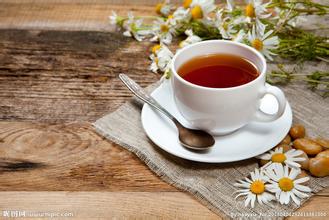Introduction to the flavor description method of Costa Rica Tara Pearl Honey Coffee Bean
Introduction to the flavor description method of Costa Rica Tara Pearl Honey Coffee Bean
Red honey treatment is a unique processing method of coffee. After picking, the coffee fruit is like a red cherry-shaped fruit. The coffee bean is the coffee core, wrapped by the peel, pulp and inner fruit membrane of the coffee fruit. Mature coffee fruits should be treated immediately after picking to avoid corruption. The raw bean treatment of coffee is the process of removing the exocarp and pulp of coffee, and then taking out the seeds through fermentation. Generally speaking, there are four common treatment methods on the market: sun treatment, water washing treatment, semi-washing treatment and honey treatment.
Production area: Tarrazu, Costa Rica
Variety: Red Bourbon
Grade: SHB
Altitude: 1500-1950 m
Soil: volcanic soil
Treatment: yellow honey
(Honey Coffee), can be translated as "as sweet as honey" treatment. The coffee that Costa Rica claims to be "as sweet as honey" is Honey Coffee on the sack, which is quite eye-catching. It has improved the Brazilian half-sun method to increase sweetness, focusing on keeping the pectin layer glued to the pods as completely as possible, removing the peel and moving the sticky pods to an outdoor viaduct, similar to Kenyad's practice, so as not to absorb the odor and moisture of the land, then expose to the sun and air-dry for about a week or two. During this period, you have to turn the pods every hour to make them evenly dry, so that the beans can fully absorb the fruit aroma and sugar essence of the thick pectin layer, and put them into a wooden container to ripen after dehydration. It takes a lot of work, but the fruit of "honey wine" tastes as sweet as honey. The disadvantage is that the risk of this method is very high, and it is easy to mildew and rot when the weather is too wet. Costa Rica is not as dry as it is, but it dares to use the treatment of exposure for a long time, which makes people feel cold sweat, but it also reflects Costa Rican coffee craftsmanship.
The flavor of Costa Rica has always been steady, without the sharpness of Guatemala, it is quite mild and supple, sour, sweet and bitter chocolate, inclusive and well-balanced, is the classic flavor of gourmet coffee. The seven major coffee producing areas are as follows: Durieba Valley (northeast of the capital San Jose), Central Valley (northwest of San Jose), Western Valley (west of the capital), Sanhe District (east side of the capital), Blanca (southeast of the capital), Orosi (north of the capital), Tarazu (south of the capital). Among them, the Central Valley, Tarazhu and Sanhe producing areas are the most famous. In principle, the quality of coffee sloping towards the Pacific is better than that facing the Atlantic. In the 2007 Costa Rica Cup Test Competition, the champion farm Serobado was located in the Tarazu producing area south of San Jose, but the Central Valley also performed well, with two or four from the city of Naranhe, where Sanhe District seemed to be left out.

Important Notice :
前街咖啡 FrontStreet Coffee has moved to new addredd:
FrontStreet Coffee Address: 315,Donghua East Road,GuangZhou
Tel:020 38364473
- Prev

Introduction to the Flavor description treatment method of Rwanda Coffee Bean Grinding scale Variety Manor
There are about 33000 hectares of coffee plantations in Rwanda, with 500000 people engaged in the coffee industry. With the good natural conditions of high altitude and fertile volcanic soil, the country's fertile soil and suitable climate contribute to the growth of plants, and coffee trees seem to be driven or forced to grow upward.
- Next

Introduction to the taste characteristics of varieties treated by flavor description of Ethiopian Sidamo coffee beans
Introduction to the taste characteristics of the Ethiopian Sidamo coffee bean flavor description method Korate won the first place in the Ethiopian limited cup sun exposure group with a score of 91.9. the overall flavor is quite similar to the first prize in last year's limited cup sun exposure group-Amaro Gayo. The dried aroma after grinding is dominated by very sweet blueberry aromas with rising floral aromas and a hint of cinnamon.
Related
- Detailed explanation of Jadeite planting Land in Panamanian Jadeite Manor introduction to the grading system of Jadeite competitive bidding, Red bid, Green bid and Rose Summer
- Story of Coffee planting in Brenka region of Costa Rica Stonehenge Manor anaerobic heavy honey treatment of flavor mouth
- What's on the barrel of Blue Mountain Coffee beans?
- Can American coffee also pull flowers? How to use hot American style to pull out a good-looking pattern?
- Can you make a cold extract with coffee beans? What is the right proportion for cold-extracted coffee formula?
- Indonesian PWN Gold Mandrine Coffee Origin Features Flavor How to Chong? Mandolin coffee is American.
- A brief introduction to the flavor characteristics of Brazilian yellow bourbon coffee beans
- What is the effect of different water quality on the flavor of cold-extracted coffee? What kind of water is best for brewing coffee?
- Why do you think of Rose Summer whenever you mention Panamanian coffee?
- Introduction to the characteristics of authentic blue mountain coffee bean producing areas? What is the CIB Coffee Authority in Jamaica?

